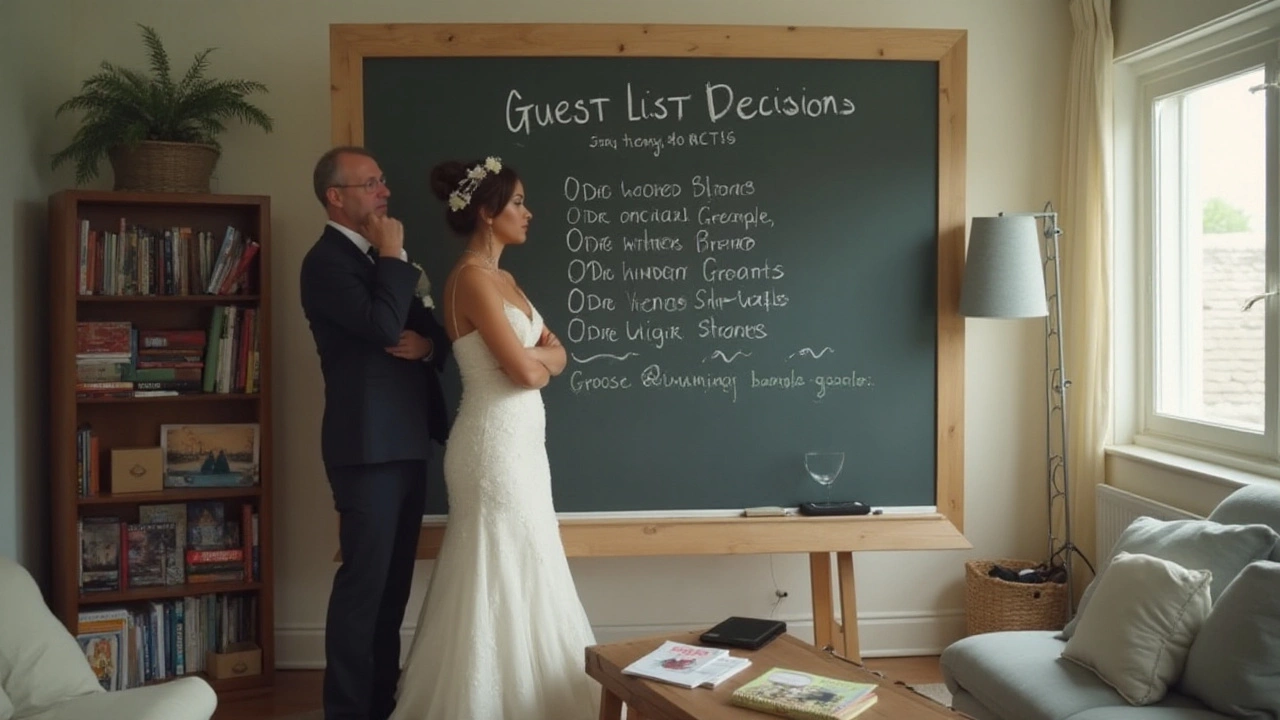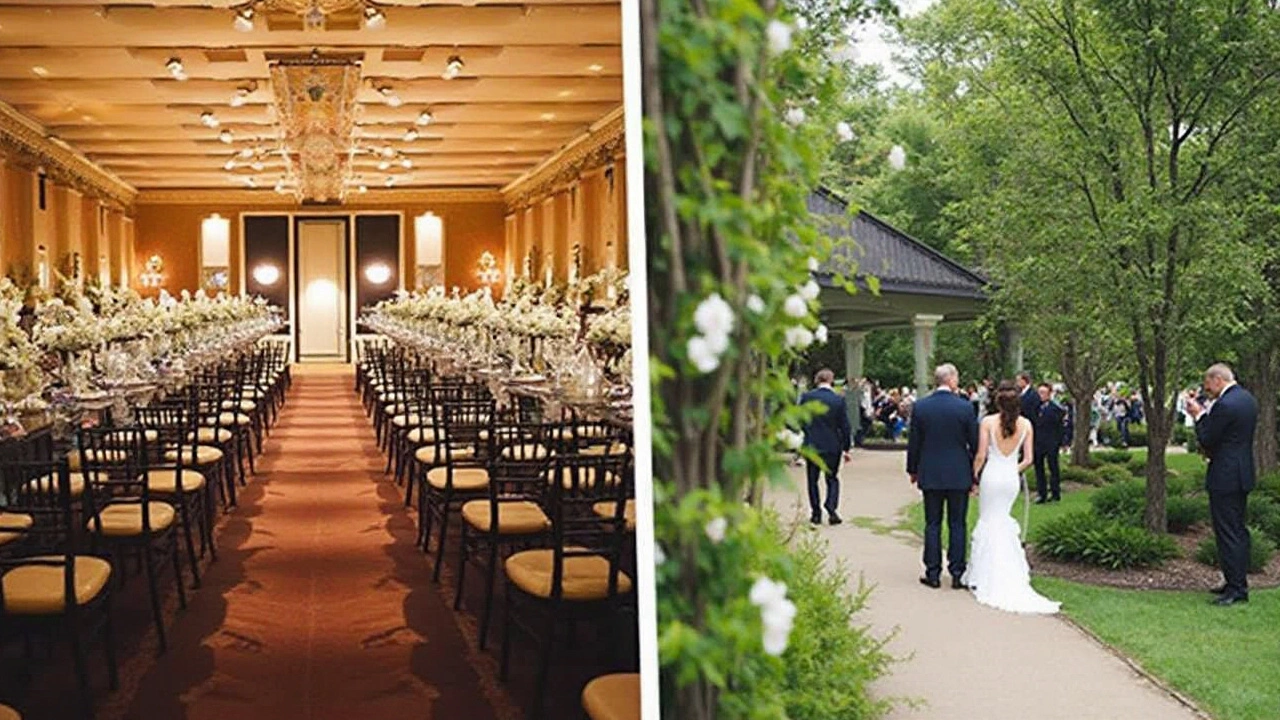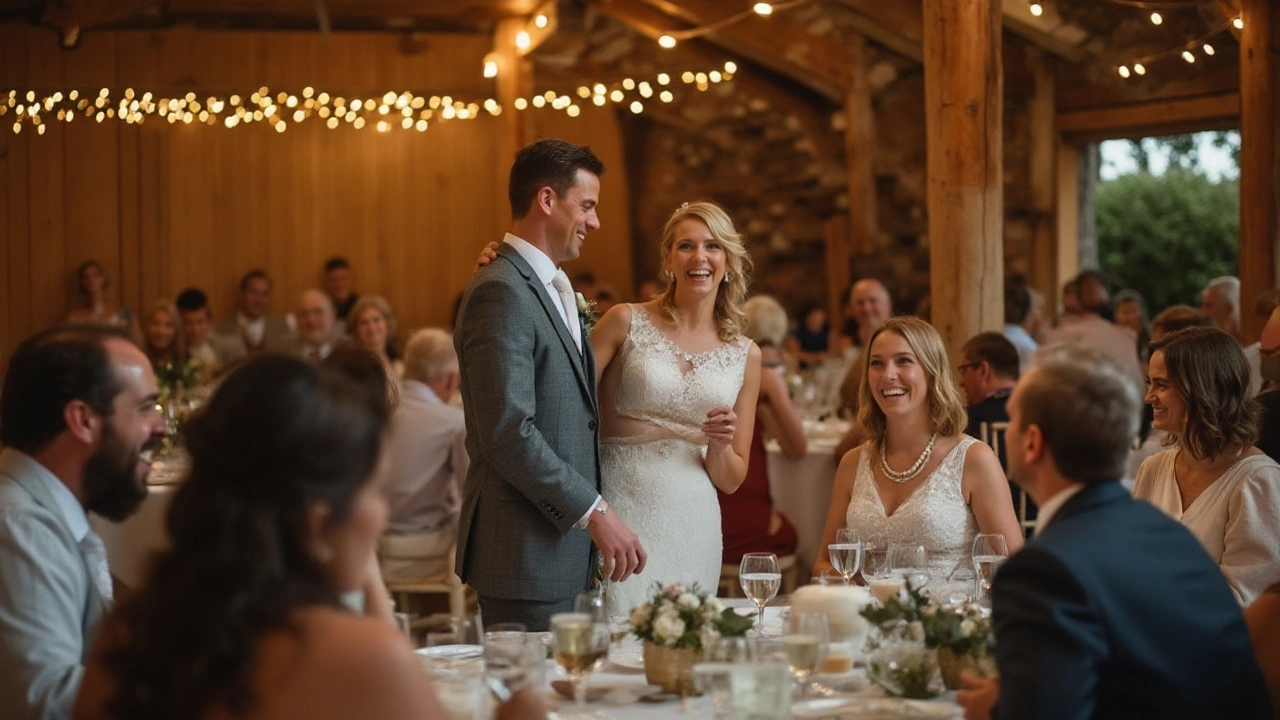Weddings are a beautiful celebration of love, symbolizing the start of a lifelong journey together. One of the first big steps in planning a wedding is determining how many guests to invite. It's a more complex decision than it might initially seem.
Factors such as family expectations, cultural traditions, and the couple's vision for their special day all play a role in shaping the guest list. For many, it becomes a delicate act of balancing between wanting to share the joy with everyone they care about and staying within budgetary and logistical limits.
Interestingly, data suggest that the average number of guests at a wedding has changed over the years due to evolving trends and circumstances. By diving into these statistics and understanding the reasoning behind different guest counts, couples can find the right number that fulfills their desires and practical needs.
- Understanding Traditional Guest Counts
- Balancing Budget and Venue
- How to Decide Who to Invite
- Trends and Insights in Modern Weddings
Understanding Traditional Guest Counts
When it comes to planning a wedding, deciding on the number of guests is a task that often involves weighing tradition against personal preference. Traditionally, weddings are seen as community events, where the couple and their families aim to invite as many people as they know who have shared in their lives. In the past, it wasn't uncommon for guest lists to exceed 150 people, especially in cultures that highly value community and familial bonds. These guest lists often included extended family, close family friends, colleagues, and sometimes even neighbors.
In recent years, however, there has been a noticeable shift towards more intimate gatherings. With the rise of destination weddings and the increasing costs associated with hosting large events, many couples are opting for a more personal celebration with fewer guests. This not only helps manage budgets more effectively but also allows for more meaningful interactions with each guest. A study by The Knot in 2023 revealed that the average number of guests at weddings has dropped to 105, reflecting this trend towards intimacy. The cherished moments seem to matter more than the grandeur of having a vast audience.
Moreover, the guest count can be influenced by venue capacities. Venues have varying limits on how many attendees they can accommodate, which forces soon-to-be-weds to adjust their lists accordingly. Wedding venues often provide packages based on different guest numbers, which can double as a great consideration when trying to narrow down friends and family from both sides of the aisle. As such, it becomes crucial to align your guest list with the capacity of your chosen venue to avoid additional stress. Wedding invitations need to be sent out early enough to ensure the ability to arrange seating and planning around these logistics.
Traditions also play a role in the invitation process. In many cultures, inviting an entire family, including children, is the norm. Yet, some choose to host adult-only ceremonies to reduce the count or create a different vibe for their event. As cultures and personal preferences evolve, so do trends around the number of guests. There's even been a rise in the popularity of "micro-weddings," where only 20-50 people are invited.
"The guest list is the foundation for a successful wedding. It sets the tone for everything from budget to venue choice," says professional wedding planner Emily Reynolds, emphasizing the importance of a well-thought-out guest count.
Interestingly, some data indicates that wedding planning preferences are heavily influenced by regional differences. For instance, country weddings often host larger guest lists compared to city-centered celebrations, due in part to more spacious settings available in rural areas. Conversely, urban weddings tend tighter on space and costs, leading to reduced attendance. Recognizing these traditional influences and modern-day preferences can help couples strategize about who makes the list, without any unnecessary drama.

Balancing Budget and Venue
When planning a wedding, the intersection between your venue choice and budget constraints often dictates the number of guests you can comfortably invite. It's a delicate dance where dream meets reality, and meeting in the middle requires careful consideration. The venue is often the largest single expense for a wedding, so it’s critical to align your guest list with what the space can feasibly accommodate. Picture your ideal wedding. Are you imagining a grand ballroom filled with laughter and clinking glasses? Or perhaps a quaint garden ceremony surrounded by lush greenery?
Most venues have specific guest capacity limits, and exceeding them isn't just uncomfortable but also potentially a breach of contract. Understanding these numbers early in your planning process is crucial. Some venues have tiered pricing based on guest count, which can significantly impact budgeting. You might need to make a list prioritizing your must-invite guests, followed by those you’d invite if the space and budget permitted.
As wedding expert Sally Kilpatrick notes, "Finding the right balance is about understanding the trade-offs. A smaller venue might mean a more intimate celebration. By cutting down the guest list, you can allocate resources toward creating a memorable experience for each attendee."It's not just about space; think about catering costs, which typically account for a large portion of the per-guest expense. Catering can range from around NZD 100 to NZD 300 per head or more, depending on the menu and service style. These increments may seem small at first glance, but they add up rapidly as your headcount increases. Knowing these figures helps strike balance things where each decision supports a seamless blend of hospitality and personal style.
Using tables to analyze your budget against potential venue costs could provide clarity:
| Number of Guests | Venue Cost | Catering Cost (Per Guest) |
|---|---|---|
| 50 | NZD 2000 | NZD 150 |
| 100 | NZD 3500 | NZD 150 |
| 150 | NZD 5000 | NZD 150 |
In crafting your strategy for balancing budget and venue choice, don't overlook alternative options. Off-peak weddings, such as those held on weekdays or during less popular months, often allow for more favorable rates without sacrificing quality. Many venues offer package deals during these times, which can include everything from the ceremony space, reception hall, to sometimes even catering.

How to Decide Who to Invite
Deciding who to invite to your wedding is a significant task that involves both the heart and the mind. While the temptation might be to invite everyone you know, constraints like budget and venue capacity often mean hard choices must be made. Beginning with a clear-headed approach often helps ease the emotional weight of these decisions. Start by sitting down with your partner and discussing your top priorities: do you want an intimate gathering or a large festive event? This conversation should guide the course of your guest list.
Creating a guest list isn't just about numbers; it's about weaving together the tapestry of people who have shared in your lives and will witness your union. One often recommended strategy is to draft a list in tiers. Begin with immediate family and lifelong friends, people who absolutely need to be there. Then, move on to extended family, friends, and acquaintances. Consider their relationship to you both and feasibly, their impact on your life. By categorizing your guests, it becomes somewhat clearer who truly needs to attend.
An interesting study from the Knot found that the average wedding hosts about 130 guests, making this a potential benchmark for those unsure about how many friends to invite. However, trends are shifting with many choosing to opt for smaller, more personal gatherings. It's also useful to consider factors like traveling; sometimes, inviting fewer people means everyone can have a more comfortable, tight-knit experience.
As wedding planner Laura Steele has noted, "Your wedding is about the two of you, your loved ones, and the celebration of your future together. It's not about pleasing everyone else." This perspective serves as a pertinent reminder that the invitation list should reflect what you truly want for your big day and not be solely about fulfilling expectations.
Practical Steps to Finalize the List
Once you have initial ideas about who to invite, it's useful to transition into the logistical aspect. A productive first step is to visit your chosen venue to ascertain its capacity. This narrows down the maximum number of guests, thus providing a tangible figure to guide your decisions. Following this, review your budget to see what can realistically be managed. Different considerations might include catering costs, additional costs for extra guests like transportation or accommodations, and the simple pleasures like personalized wedding favors or table settings.
Organizing pre-wedding gatherings or sub-events, like an engagement party or a bridal shower, might also provide an opportunity to include others in your celebration beyond the wedding day. These gatherings offer a more inclusive approach while keeping your ceremony and reception more focused and intimate. Another method to handle a burgeoning guest list is considering a live stream option for extended friends and relatives unable to attend in person, allowing them to share in your joy even from a distance.
Ultimately, the task of deciding who to invite is a balancing act of head and heart. By taking the time to carefully weigh the importance and impact of each potential guest, couples can curate a wedding day that feels just right to them, filled with the people who truly matter and who will share in the memories for years to come.

Trends and Insights in Modern Weddings
Modern weddings have dramatically evolved, reflecting changes in societal norms, economic conditions, and technological advancements. One of the most notable trends is the reduction in average wedding sizes. Couples today often opt for more intimate ceremonies, prioritizing close relationships over broad attendee lists. This shift can partly be attributed to the rising costs associated with hosting large events, as well as a growing preference for personalized experiences over grand spectacles.
Additionally, the COVID-19 pandemic had a profound impact, prompting many to rethink traditional wedding formats. Remote celebrations via video platforms became common, allowing those who couldn’t travel to still join the festivities. This trend seems to have lasting appeal, with many choosing hybrid setups that combine physical and virtual interactions. In fact, a survey found that 35% of couples in 2024 preferred keeping a virtual element to their gatherings, broadening accessibility while reducing cost.
Another exciting development in modern weddings is the diversification of venues. Couples are increasingly seeking unique and meaningful locations that resonate with their story. Be it a beautiful backyard, a charming seaside retreat, or a historic library, choices today reflect personal significance rather than conventional expectations. With this shift, many are putting a premium on experiences over sheer number of attendees.
"Couples are no longer constrained by tradition in their planning; they’re making their own rules to align with what feels authentic," says wedding planner Kate Simpson from New Zealand.
There's also a notable trend towards sustainability within wedding planning. Environmental consciousness now plays a pivotal role, with many opting for eco-friendly options such as using recyclable materials, minimizing waste, and choosing local flowers and foods to reduce carbon footprints. This reflects the broader societal push towards being mindful of our impact on the planet and leaves a positive legacy that guests will appreciate.
The integration of technology extends beyond just video calls. The use of online invitations, digital RSVPs, and even apps to manage seating charts have simplified planning tremendously. Couples are finding innovative ways to engage their guests through social media, creating hashtags for sharing memories and using live streams to bring distant loved ones closer.
In summary, the landscape of modern weddings is as diverse and dynamic as the couples getting married. From budget-conscious decisions to meaningful venues and sustainable practices, weddings today are distinct expressions of individual love stories. This era of personal choice is redefining traditions and ensuring that every celebration is both memorable and meaningful. The choice to emphasize quality over quantity shines brightly in how many friends are invited to the wedding for such an extraordinary journey.

